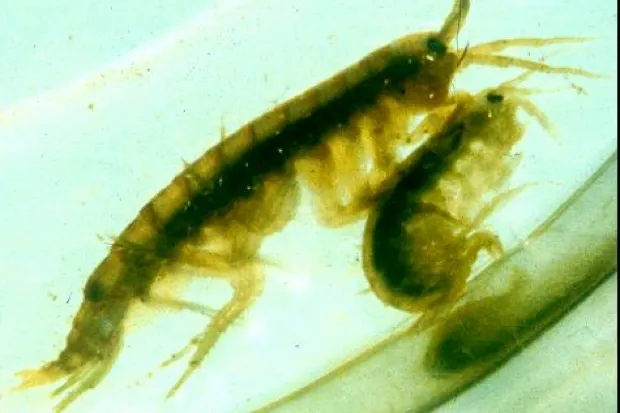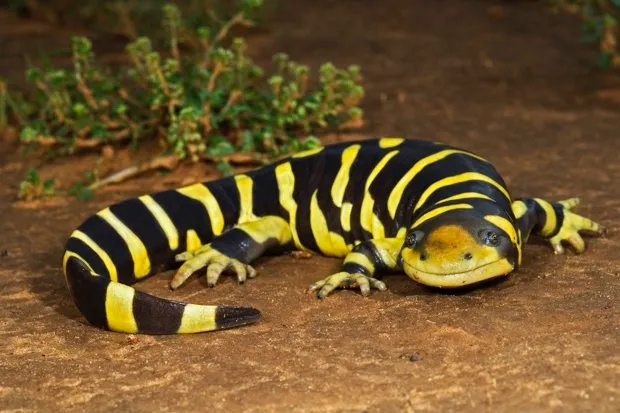It’s a dog-eat-dog out there, but for some animals this is more than just a metaphor. Animalcannibalismis rife in nature, with few species spared from a ghastly end, but some of the reasons why animals eat their own species are even more frightful than the act itself. Here are some examples of cannibalistic animals that will turn you off your lunch:
1
Spiders

What would you give up for your kids? You'll have a hard time beating the male dark fishing spider, which pays the ultimate sacrifice by curling up immediately after mating to provide a delicious snack for the female. That said, it probably wouldn't have much of a chance if it tried to run away, as the female is 90 per cent larger than the male.
A study, published in Current Biology, found that spiderlings (we know, cute eh…) of the female that ate her mating partner were 20 per cent larger and survived 50 per cent longer than those whose parents didn’t indulge in a bit of post-copulation cannibalism. Whatever floats your boat.
2
Freshwater shrimp

It’s not uncommon for the Gammarus duebeni shrimp to indulge in eating some of their young, but this goes into overdrive when they are infected by the Pleistophora mulleri parasite. The tiny parasite is only as large as a human red blood cell, but they can exist in the muscle fibre of their host in their millions, demanding more and more food to survive. This, in turn, makes the shrimp hungrier but less able to catch their traditional prey, turning their attention instead to their unsuspecting juveniles, which they gobble up quicker and in greater numbers than they would normally. Fortunately for us, there is no indication that an infection in humans would lead to a great desire to dine on our own kind. Phew!
3
Sand Tiger sharks
When it comes to cannibalism, sand tiger sharks don’t mess around, tucking into a little fratricide before they are even born! When the first embryo of theCarcharias taurusreaches a certain size, it will start feasting on all its younger siblings. It also gobbles the rest of the unfertilised eggs in the mother as an after-dinner treat. Given the female sand tiger shark is prone to mating with a number of different males, a2013 studyreckons this grisly ritual helps produce the strongest offspring, and significantly boosts its size making much more likely to survive once born.
4
Dyeing poison frogs (Dendrobates tinctorius)

Dyeing poison frogs make one of the more bizarre parental choices in the animal kingdom, leaving their new tadpoles in pools filled with older, hungrier members of their own species, ones that are more than happy to take a bite out of their little brothers. The logic behind encouraging such sibling rivalry is that given the older taddies have successfully grown, the pool itself must be conducive to life, whereas an empty pool might not have the necessary conditions for the tadpoles to metamorphose into frogs. And you thought your older brother was unnecessarily mean to you!
5
Great apes
Chimpanzee Cannibalism - Planet Earth - BBC Earth (YouTube/BBC Earth)
Planet of the Apes might have been a work of fiction, but in the real world warring primates will engage in some morbid activities that will make even the most seasoned of horror buffs squirm. The esteemed British primatologistJane Goodallrecorded chimpanzees eating other chimps back in 1977, but since then there have been numerous documented examples of cannibalism among the great apes, with reasons ranging from nutrition, survival and perhaps eveninsurrection.
6
Orthacanthussharks

Modern cannibal animals seem almost civilised compared theOrthacanthusshark, which swam around steamy jungles of equatorial coal forests some 300-million years ago. Studies of this top predator found evidence of their own juveniles’ teeth in their distinctively-shaped coprolites (fossilised poo), suggesting they took part infillial cannibalism, the gruesome habit of eating one’s own young. “The Carboniferous Period was a time when marine fishes were starting to colonise freshwater swamps in large numbers,” said co-author of the study Dr Howard Falcon-Lang of the Royal Holloway University of London. “It's possible that Orthacanthus used inland waterways as protected nurseries to rear its babies, but then consumed them as food when other resources became scarce."
7
Hippopotamuses

If you hear the words ‘hungry hippos’ your mind probably wanders towards the classic table-top game from your youth, but in real life these 1,500kg African beasts are not to be messed with when they get a rumbly tummy. A recent paper in theAfrican Journal of Ecologydescribed the rare momenta hippo in South Africa’s Kruger National Park began dining on the carcass of one of its own kind. What makes this even more unusual is that hippos are herbivores! Hippopotamuses need to eat 40kg of grass a night to survive, and with increasing drought and an encroaching human population it’s little wonder this vegetarian animal might turn to the most macabre form of food. When times are tough and nutrition is hard to come by, they are left with little option but to eat whatever they find, including their own species.
8
Tyrannosaurus Rex

Why wouldn’t one of the biggest and baddest of all the dinosaurs not indulge in a little Tyrannosaurus-on-Tyrannosaurus dining?! Thestudyof a 66-million-year-old tyrannosaur bone discovered in Wyoming found the size and serration of the tooth marks suggested the flesh was ripped off the bone in a similar way to how we would eat chicken, something only a theropod would be able to do. And which was the only theropod known at that time and place?T. rex, of course.
9
Tiger salamanders

We’re used to seeing our brothers and sisters fill out into different shapes and sizes to us, but that’s nothing compared to the tiger salamander. When in an overcrowded space, some tiger salamander larvae will morph larger, flatter heads with teeth three times bigger than their siblings, perfect for eating up any other larvae that tickletheir taste buds.
10
Neanderthals

You didn’t think us humans could get away with not appearing here did you? Throughout history there have been numerous reports of cannibalism in times of famine, through cultural practices or even more grisly situations like murder, but going back even further, Neanderthal cannibalism has been found in numerous sites throughout Europe. For example an excavation at the Troisième caverne in Goyet, Belgium found the remains of four adults and one child with cut marks and percussion marks, suggesting the bones were crushed to extract marrow. The bones of horses and reindeer with the same marks were also found on the same site, suggesting some sort of macabre banquet took place some 40,000 years ago.

